The World of Grim Cryptozoological Christmas Creatures
A fat man squeezing down chimneys and traveling faster than the speed of light to deliver presents in one night? A half-human, half-diety born from a virgin? Eating petrified fruitcake? You have to admit that Christmas is full of outlandish claims and impossible weirdness. Ever since the earliest celebrations of Christmas, there have been some bizarre beliefs surrounding the holiday. Here is a glimpse at just a few of them from around the world.
What would Christmas be without witches? Well, for Norwegians, it might be a little less stressful. There is a long-held belief in this country that Christmas Eve is a favorite time for witches to steal brooms; hiding brooms and mops on Christmas Eve became a tradition, which is still carried out by some to this day. Some die-hard believers will even fire guns into the air that night before bed to be sure and scare away the would-be thieves.
Even Italy isn’t safe from witches, though this time, it’s a welcomed visitor. There’s an old legend about a forgotten section of the story of Jesus’ birth wherein the three wise men encounter an old woman who asks them where they’re going. They invite her to come see the birth of the new savior, but she told them she was too busy cleaning. After learning that the baby was Jesus, she was so filled with regret that she began wandering Italy on a donkey on January 6 (the Epiphany) leaving presents for good children. Known as La Befana, this female Santa is traditionally viewed as being a witch. (It’s more popular to hear of her traveling by broom instead of donkey.) If the children were bad, she would leave them a lump of coal, which is where the unpopular tradition comes from.
But it’s not just witches who come out for Christmas; there are goblins, too! Every year from December 25 until January 6, half-human creatures known as Kallikantzaroi are said to terrorize the people of Greece. Normally living underground (or shapeshifting people born on Christmas Day), these beasts are said to have hairy upright bodies, horse legs, monkey arms, red eyes, and wear iron shoes on their cloven hooves. The hideous goblins play all sorts of pranks: breaking things, causing food to spoil,… even kidnapping and murdering people! Old tradition states that the stench of a burning shoe drives them away. Keeping the fireplace roaring prevents them from climbing down the chimney, but some people settle for painting a black cross on their front door, burning incense, and/or sprinkling holy water around the house.
ADVERTISEMENT
In the Netherlands, Santa Claus has his own little helper called Zwarte Piet, or Black Peter. Does it sound a little racist? Well, you might be right. According to legend, Sinterklaas departs from his home in Spain via steamship and arrives in the Netherlands on St. Nicholas Day (December 6) accompanied by his slave, there to amuse children, dole out candy, and give out lumps of coal to the bad kids. Supposedly, Black Peter would also stuff some especially naughty children into his sack to take back to Spain (to be sold into slavery or eaten, I wonder). In an effort to dismiss the blatant racism, he evolved into a “chimney sweep” instead of a slave, but it’s not too often you see an afro and blackface and think “Bert from Mary Poppins.”
Still, that’s not the weirdest companion for Santa. What about Santa’s evil twin?
I’m not sure that anyone would mistake these two for brothers, but throughout Austria, Bavaria, Hungary and Slovenia there is an old Germanic tale of St. Nick traveling with a demonic assistant to take care of the bad little boys and girls. His name is Krampus. (The word Krampus is a variation of the Old High German word krampen meaning “claw.”) Santa carries carrots for good children, while Krampus carries sticks and rusty chains to beat the bad kids. Unlike the fat, jolly man in red, his menacing cohort is reminiscent of Satan: a goat-like body covered in fur, fierce claws, horns atop his head, and chains about his ankles and wrists.
As the sun goes down on December 5th, so begins Krampus Night in Austria. Children are told to go to sleep and stay in bed as not to encounter Krampus; it’s said in Croatia that if he sees a child awake, he will assume he or she has been bad and stuff them in his sack (taking them to Hell or child slave labor for the toy shop, I would assume). Hungarians have a more lighthearted attitude, making Krampus more funny than scary; bad kids get Virgác – bundles of gold-colored twigs – but get presents anyway.
Traditionally, Krampus Night supposed to be the night when Saint Nicholas and Krampus make their rounds. Hundreds of people gather for drinking, dressing up as Krampus with elaborate carved wooden masks, ringing cowbells to signal their approach, and smacking each other with bundles of sticks. Of course, if you really want a reason to hit people, you can just say you were playing Hot Cockles. This game, popular from Medieval times up to the Victorian Era, involves people getting hit in the back and having to guess who did it.
MORE GREAT STORIES FROM WEEK IN WEIRD:



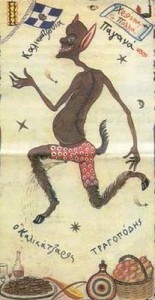
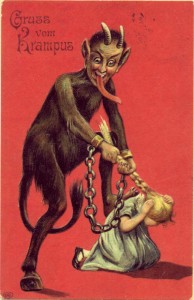
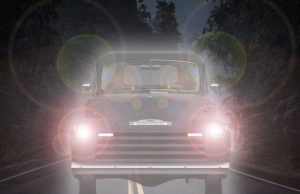
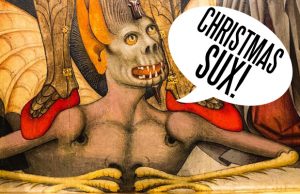
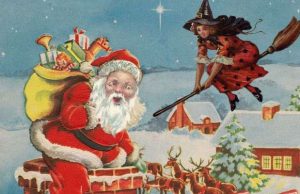

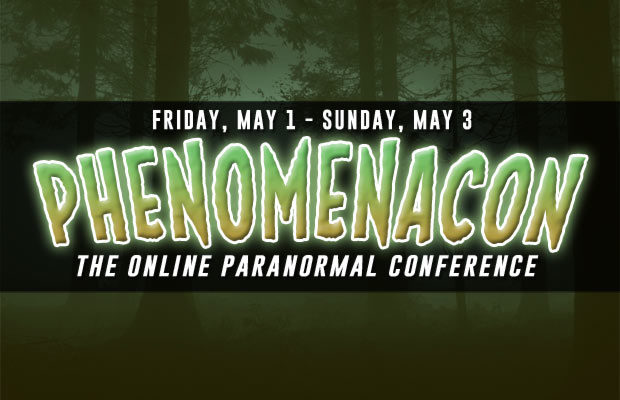
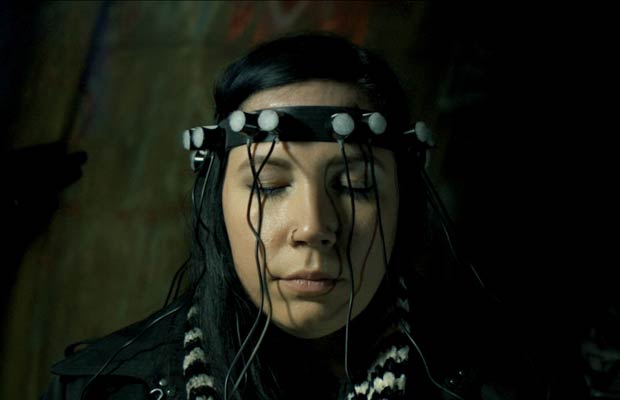

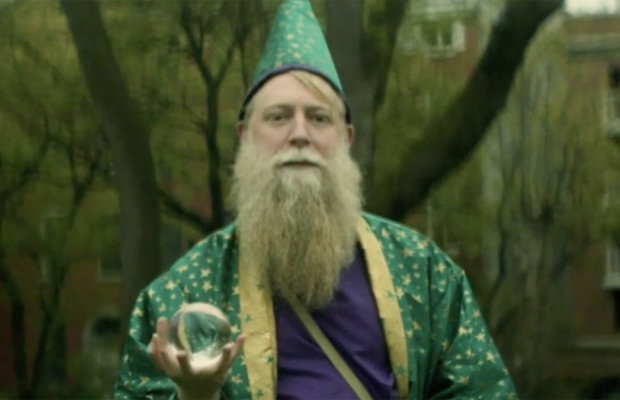

You must be logged in to post a comment Login